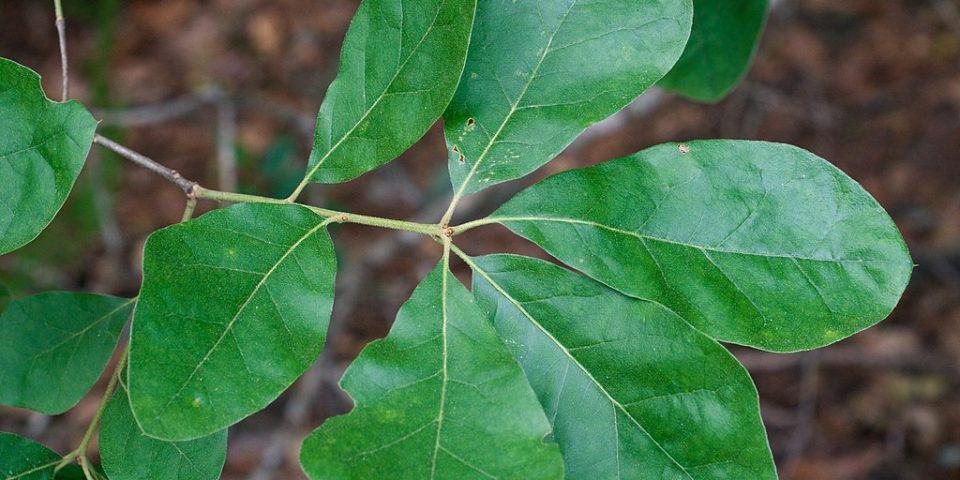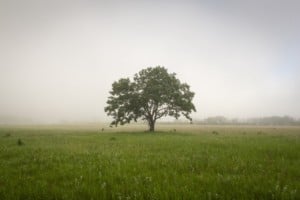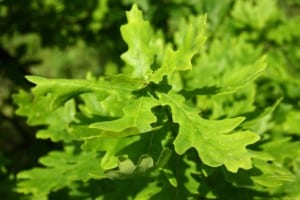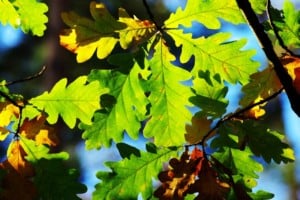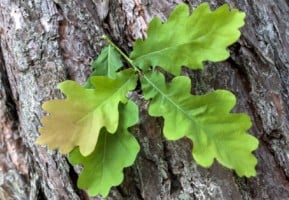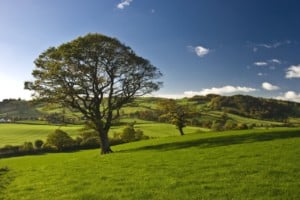Arkansas has more than 18 million acres of forests that account for nearly 60% of the state, so if you’re looking for many different types of trees, this is a great place to be. Pine trees are the most common type of tree in the state, but it is home to many other species as well, including the mighty oak tree.
Contents
- 1. Black Oak (quercus velutina)
- 2. Blackjack Oak (quercus marilandica)
- 3. Cherrybark Oak (quercus pagoda)
- 4. Chinkapin Oak (quercus muehlenbergii)
- 5. Maple Leaf Oak (quercus acerifolia)
- 6. Northern Red Oak (quercus rubra)
- 7. Nuttall Oak (quercus texana)
- 8. Overcup Oak (quercus lyrata)
- 9. Pin Oak (quercus palustris)
- 10. Post Oak (quercus stellata)
- 11. Southern Red Oak (quercus falcata)
- 12. Swamp Chestnut Oak (quercus michauxii)
- 13. Water Oak (quercus nigra)
- 14. White Oak (quercus alba)
- 15. Willow Oak (quercus phellos)
Native to the Northern Hemisphere, oak trees can be either deciduous or evergreen trees, and they can have leaves that are quite different from one another. They can be small or large, smooth or with a lot of veins, dark green or a yellow-brown color, and both male and female flowers bloom on the tree in the spring.
Oak trees are regal-looking because they are so tall and attractive. They typically live for 200 to 300 years, although a few have lived as long as 600 years. One of the things that makes the oak tree so valuable is its wood, because it is strong and dense and, therefore, is used to make everything from furniture to flooring and much more.
Of course, oak trees are significant for more than just the wood. They are stately looking trees that often line public streets and public areas such as parks and gardens. Oak trees are indeed eye-catching, and most of them are easy to grow as well. If you’d like to learn more about the types of oak trees in the state of Arkansas, below is a description of each of them.
1. Black Oak (quercus velutina)
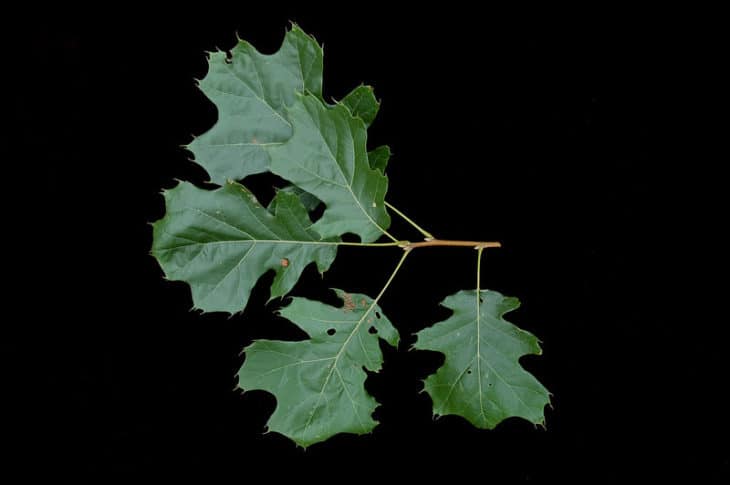
The black oaks are actually part of the red oak family and they grow to roughly 80 feet high at the most. The trunk can be nearly three feet in diameter, and the leaves are four to eight inches long and a bright green color. The tree has medium-sized acorns and grows well in all types of climates, and it has been known to hybridize with about a dozen other trees.
2. Blackjack Oak (quercus marilandica)
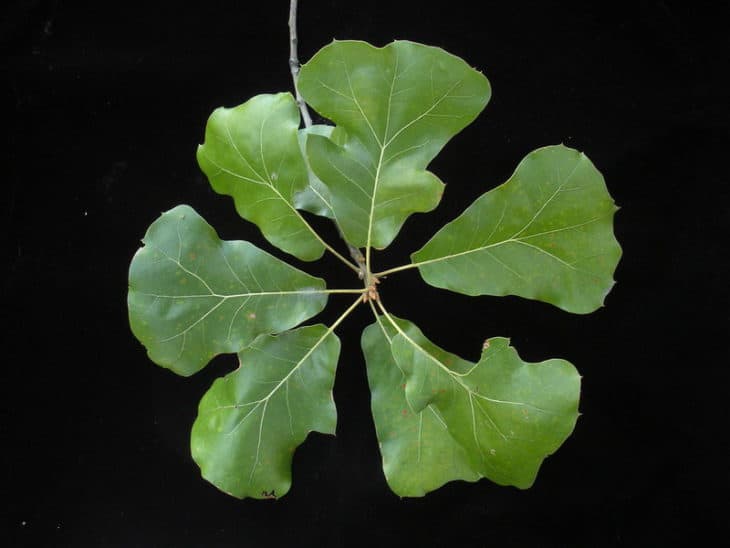
Considered a small oak tree, the blackjack oak usually gets to no more than 49 feet in height, but it can grow in a variety of soils and is, therefore, considered easy to grow. It is not as majestic as other oaks, but is still a tree with tough wood that is frequently used in BBQ grills and wood-burning stoves. You cannot, however, use it in fireplaces because the wood tends to spark often and may start a fire.
3. Cherrybark Oak (quercus pagoda)
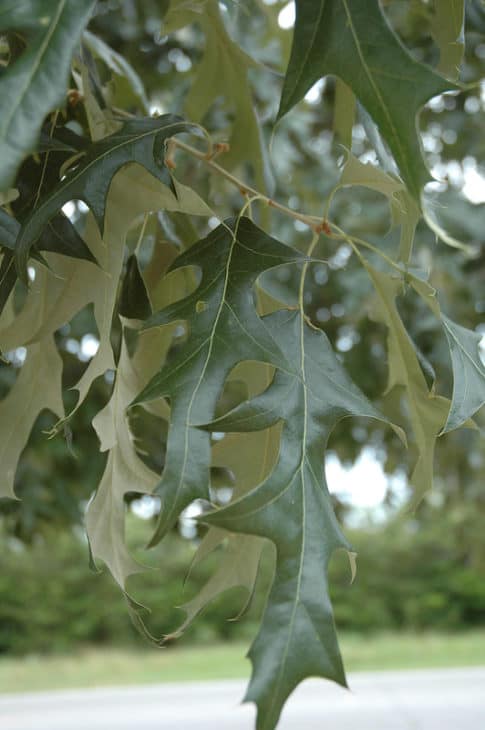
Also called the Texas oak tree, this type of red oak is considered very valuable because it is quite large and very well-formed. It gets from 100 to 130 feet high and has a trunk that can be up to five feet in diameter. Fast-grown, the cherrybark oak tree is one of the hardest types of oak trees, making it very valuable in numerous industries. The tree produces acorns every year and unusually large numbers of them every other year.
4. Chinkapin Oak (quercus muehlenbergii)
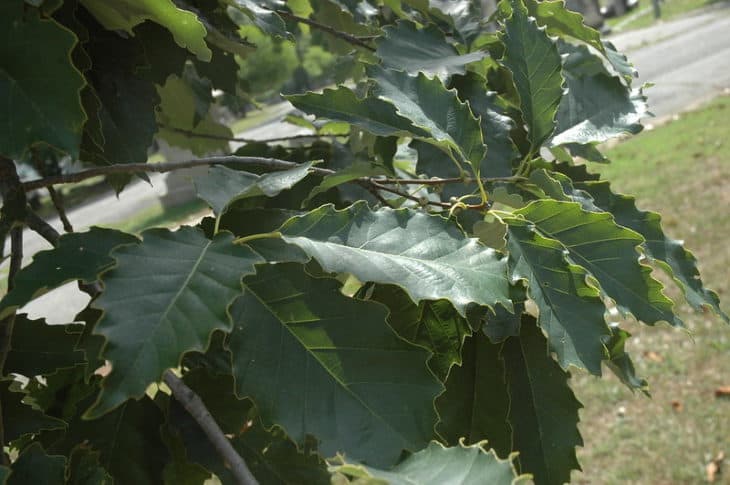
Chinkapin oak trees are part of the white oak group and are able to grow well in a variety of soils, including rocky or acidic soil. The acorns mature in about a year and the tree has gray, flaky bark. The wood of the Chinkapin oak tree is especially hard and is, therefore, used in various construction projects and flooring, among others. Interestingly, the acorns of this tree are especially sweet, making them popular with both wildlife and humans.
5. Maple Leaf Oak (quercus acerifolia)
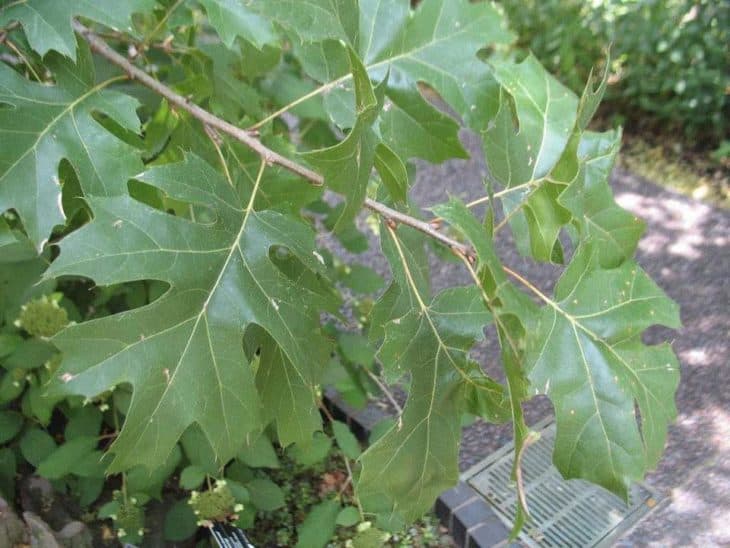
Endemic to the Ozark Mountains in the state of Arkansas, the maple leaf oak tree has leaves that are very similar to the maple tree, hence its name. They are five-lobed leaves and the two middle lobes are bigger than the other three. They grow to around 50 feet in height, although this tends to be the biggest they get. Unfortunately, the maple leaf oak is being threatened with extinction due to habitat loss, whereby natural habitats become unable to support its plants and trees.
6. Northern Red Oak (quercus rubra)
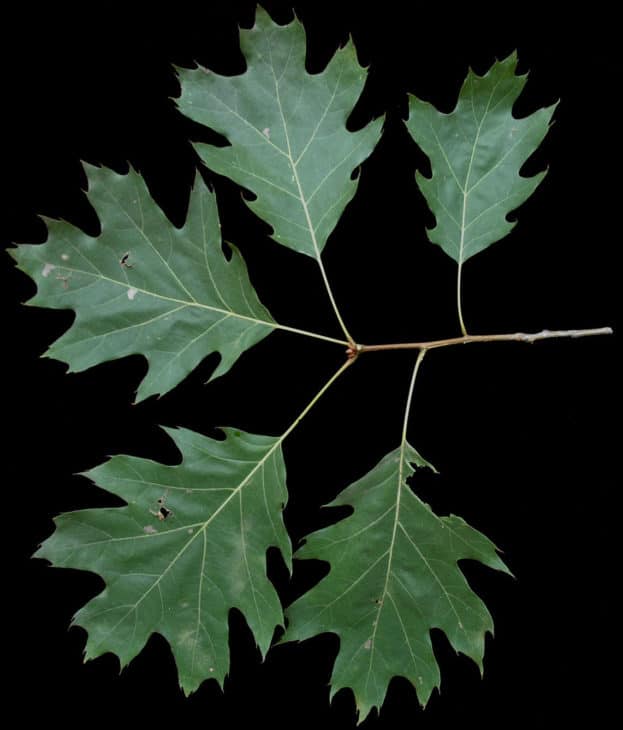
This oak tree is also called the champion oak, and it gets up to roughly 90 feet tall. Its trunk, in fact, can get up to three feet in diameter. The tree has reddish-gray/brown bark and leaves that can be nine inches long and six inches wide. Acorns on the northern red oak mature in 18 months and grow singly or in groups of two. They eventually get to a beautiful chestnut-brown color.
7. Nuttall Oak (quercus texana)
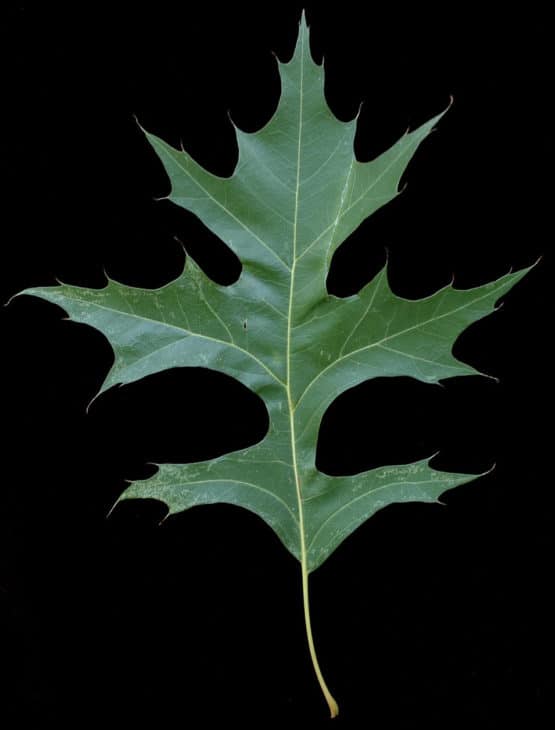
The nuttall oak tree grows fast and large and typically gets to around 80 feet tall or a little higher. Its leaves have sharp points on the lobes and turn a beautiful shade of red in the fall. It has dark-brown bark and does well in wet soils, making it a perfect tree to grow in the southeastern part of the country. Its leaves are also similar to both the Georgia oak and the pin oak trees.
8. Overcup Oak (quercus lyrata)
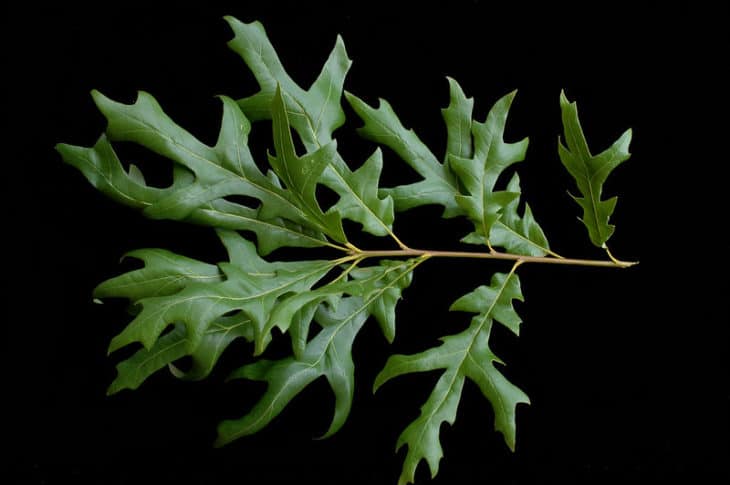
Overcup oak trees are considered medium-sized because they get up to 65 feet high. Found mostly in lowland areas, the leaves on the tree are shaped like lyres. Their large acorns are mostly covered with the case, which is how they get their name, and their leaves can be up to six inches long and up to four inches in width. The top part of the leaves is dark green and very attractive.
9. Pin Oak (quercus palustris)
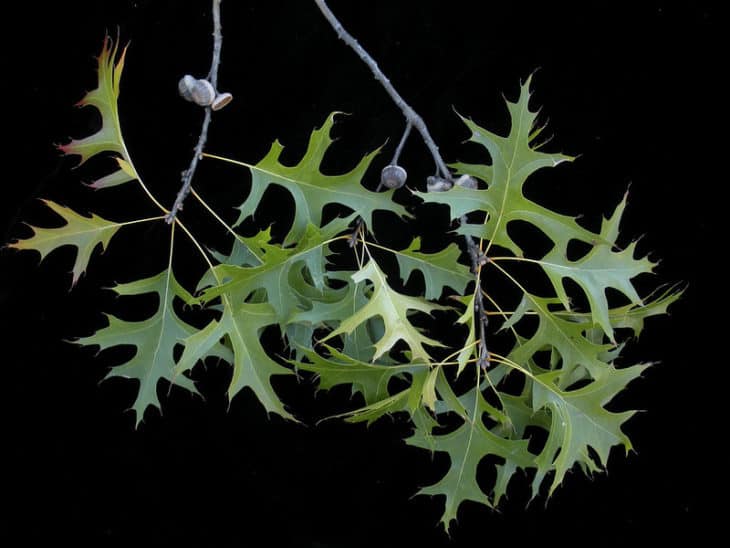
Also called the Spanish oak, the pin oak tree grows 60 to 70 feet in height and has trunks that can get up to three feet in diameter. Oddly enough, this is considered a medium-sized tree for oaks. The pin oak doesn’t live for several centuries like most other oak trees do; in fact, they typically only live around 120 years. The wood of the pin oak is pollution-resistant and therefore used frequently in landscaping.
10. Post Oak (quercus stellata)
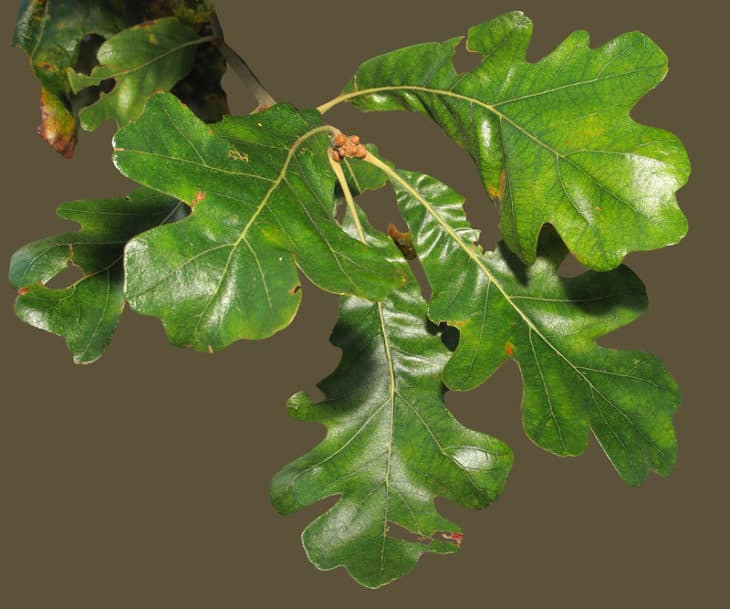
Part of the white oak group, the post oak is super easy to grow since it can grow in a variety of soil conditions. Although a few post oaks have gotten to 100 feet high, the average is around 50 feet. The leaves are very unique, looking a lot like a Maltese cross, and the small acorns mature during the very first summer after pollination. The post oak is also called the iron oak tree.
11. Southern Red Oak (quercus falcata)
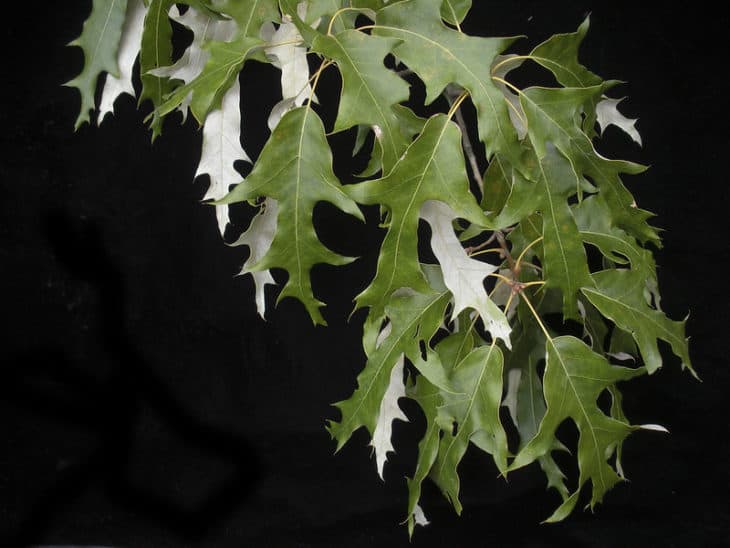
The southern red oak tree is native to south-central and eastern United States and gets up to roughly 100 feet in height. They do especially well in sandy soils and are also called the Spanish oak. The acorns are small and a beautiful shade of orange-brown, and they mature at the end of the second season after pollination. A southern red oak tree in Maryland was recently found that had a spread of more than 102 feet.
12. Swamp Chestnut Oak (quercus michauxii)
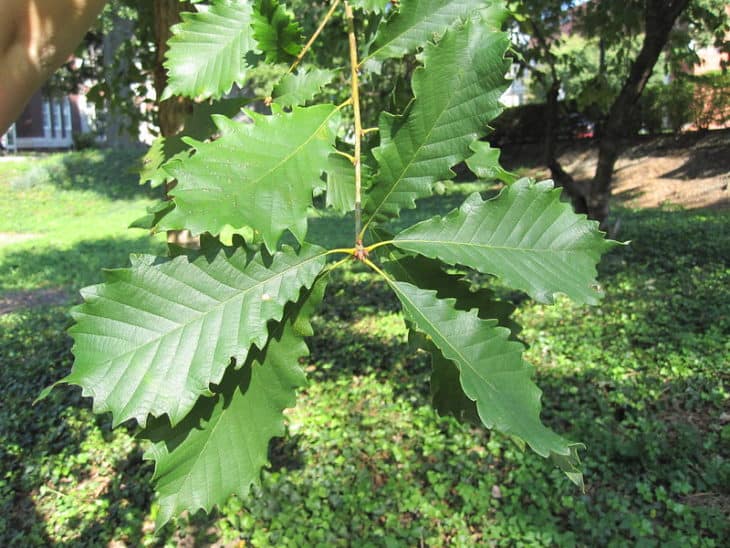
The swamp chestnut oak tree is part of the white oak group and gets to around 65 feet high. The leaves are very impressive, getting up to 11 inches long and up to seven inches wide. They also turn a beautiful shade of red in the fall. The acorns of the swamp chestnut tree are a bit on the sweet side and are, therefore, loved by cattle. The main use of the wood seems to be for wooden baskets, but the tree itself is a great ornamental or decorative tree.
13. Water Oak (quercus nigra)
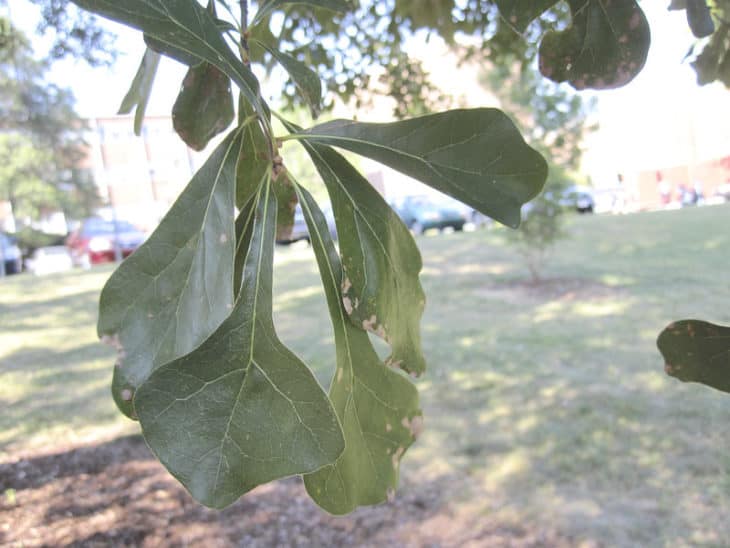
Water oaks are part of the red oak group and can get up to 100 feet high. Their trunks can get up to three feet in diameter, so they are a very impressive tree indeed. Native to the south-central and southeastern sections of the United States, water oak trees have small acorns that grow singly or in pairs. The acorns are small, however, and are generally only half-an-inch in size. The leaves of this tree are a bluish-green color and are darker on top than they are underneath. Their tint is just one of the things that makes the water oak tree stand out.
14. White Oak (quercus alba)
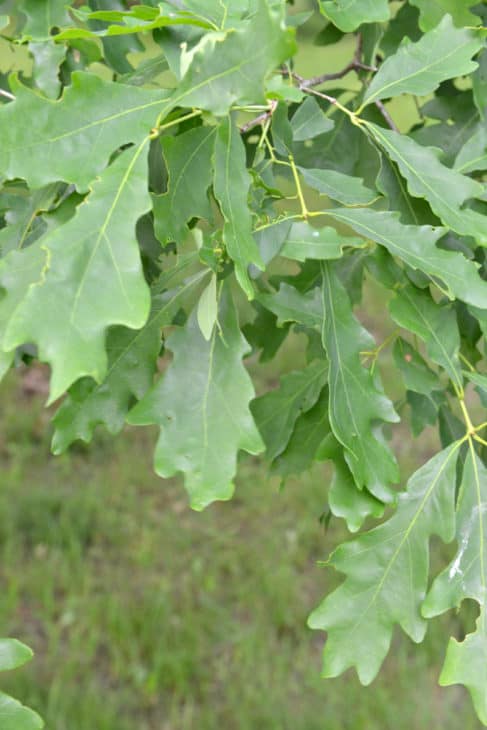
With light gray (not white!) bark, the white oak tree gets up to roughly 100 feet high, but its trunk can get up to 100 feet wide, making it a massive tree. White oaks can live for up to 300 years, although a tree of this type was recently found in New Jersey that was said to be 600 years old. Used to make musical instruments and whiskey barrels, white oak trees also make beautiful ornamental and decorative trees, especially for public areas such as parks.
15. Willow Oak (quercus phellos)
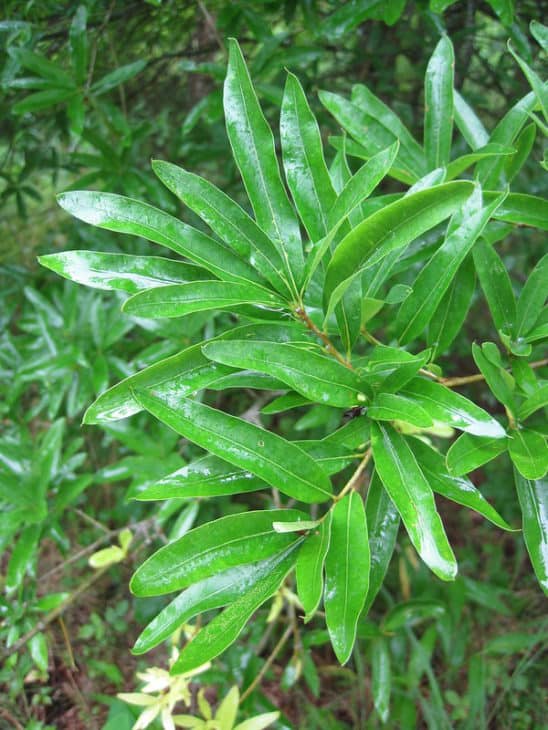
This type of oak tree can get anywhere from 65 to 100 feet high and has a trunk that can get up to five feet in diameter. The leaves are smaller than many other oak trees and only get up to four inches long and one inch in width. They are also a very attractive shade of green. In addition, because the tree grows fast and the wood is very hard, it is often used for landscaping purposes in public areas such as malls and parks.

